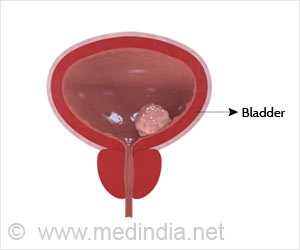A Big Data analysis has been taken up by researchers at Case Western Reserve University and colleagues to predict if a patient is suffering from various types of cancer with 95 percent accuracy.

The work comes just two months after senior author Anant Madabhushi and another group of researchers showed they can detect differences between persistent and treatable forms of head and neck cancers caused by exposure to human papillomavirus, with 87.5 percent accuracy. In that study, digital images were made from slides of patients' tumors.
Next up, Madabhushi's lab recently received a $534,000, 2-year grant from the Department of Defense to find the patterns of indolent versus aggressive cancer in the lungs. The goal is to diagnose the presence of aggressive lung cancers from CT scans alone.
"Literally, what we're trying to do is squeeze out the information we're not able to see just by looking at an image," said Madabhushi, a professor of biomedical engineering at Case School of Engineering and director of the Center for Computational Imaging and Personalized Diagnostics.
Searching for telltale markers
Madabhushi worked with Shannon C. Agner at Rutgers University and Mark A. Rosen, MD; Sarah Englander; Mitchell D. Schnall, MD; Michael D. Feldman, MD; Paul Zhang, MD; and Carolyn Miles; MD, at the University of Pennsylvania, on the breast cancer study.
Advertisement
Madabhushi and his colleagues discovered that triple-negative cancer, benign fibroadenoma that is commonly mistaken for triple-negative, and two other common types of breast cancer—estrogen-receptor positive (ER+) and human epidermal growth factor receptor type 2-postive (HER2+)—reflect different textures when images are enhanced with contrasting agents.
Advertisement
"Today, if a woman or her doctor finds a lump, she gets a mammogram and then a biopsy for molecular analysis, which can take two weeks or up to a month," Madabhushi said. "If we can predict the cancer is triple-negative, we can fast track the patient for biopsy and treatment. Especially in cases with triple-negative cancer, two to four weeks saved can be crucial."
For the three types of cancers, the early diagnosis would enable quick and personalized treatments. ER+ and HER2+ respond to different therapies. An MRI could also become a regular screening device for women who have family histories of these cancers.
Other cancers
Using much the same science, Madabhushi and fellow researchers from Washington University developed a way to distinguish between recurrent and treatable forms of a specific head and neck cancer called human papillomavirus-related oropharyngeal squamous cell carcinoma. That work was published earlier this year in the American Journal of Surgical Pathology. The abstract can be found at pubmed.
"Most sufferers tend to have good outcomes, but a small subset—about 10 percent—doesn't," he said. "There's nothing out there to predict which.
"We developed an algorithm and found patterns that allowed us to distinguish between the two with 80 to 90 percent accuracy."
After scanning biopsy and tumor resection slides from 160 patients into a computer, the researchers found they could use nuclei of the cancerous cells to characterize and measure cell distribution and clustering patterns.
They found where the nuclei of cells had reverted to a more primitive form, a condition called anaplasia, the cells were tightly clustered and the patient suffered recurrent cancer. They graphed the nuclei in each of the images and found there was little to no overlap between the highly clustered recurrent cancer and the comparatively disperse treatable form.
The results, if confirmed through further studies, could lead to milder treatment for patients who have the non-recurrent cancer and more aggressive treatment for those with recurrent cancer, the researchers say.
"Personalized medicine is possible using this," Madabhushi said. "Using biopsy specimens, pathologists can't tell one from the other, but big data analytics can."
His lab's newest project is to find characteristics that can identify cancer or precancerous conditions in the lungs, and distinguish among different types of lung cancers.
The majority of lung cancers are diagnosed at advanced stages, beyond the period in which surgery can be successful. Survival rate for one of the worst forms, non small-cell lung cancer, remains at 15 to 18 percent. In this study, the lab will use x-ray images taken with computed tomography scans to build their digital image library.
Source-Eurekalert















